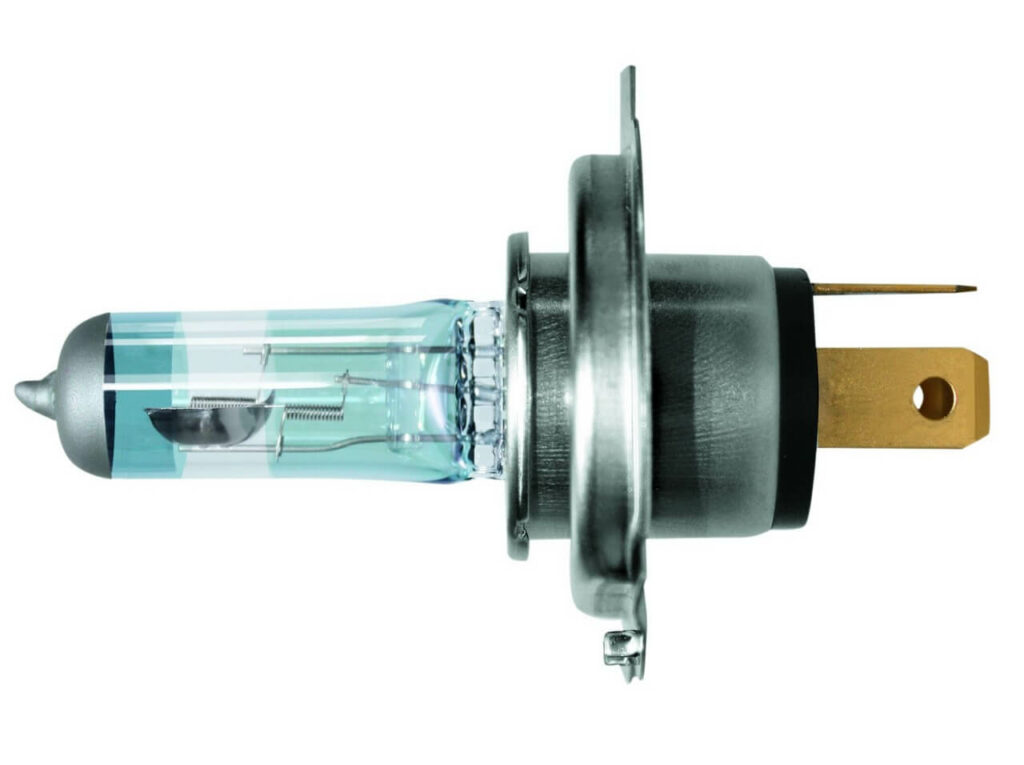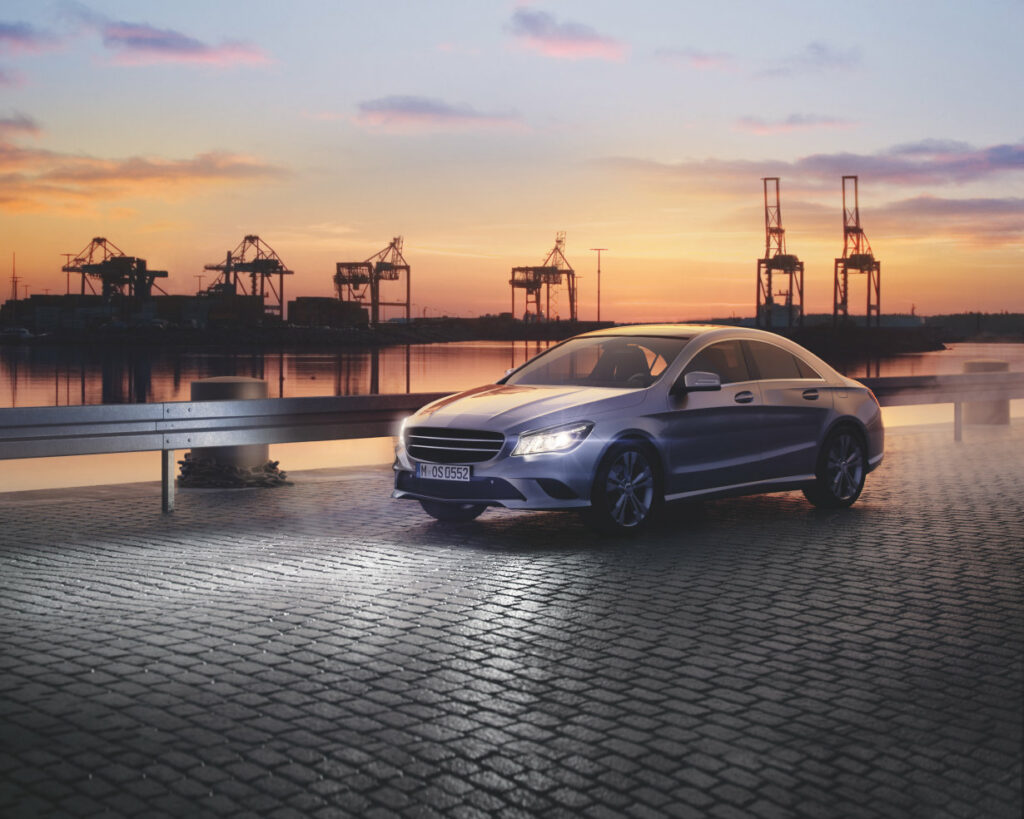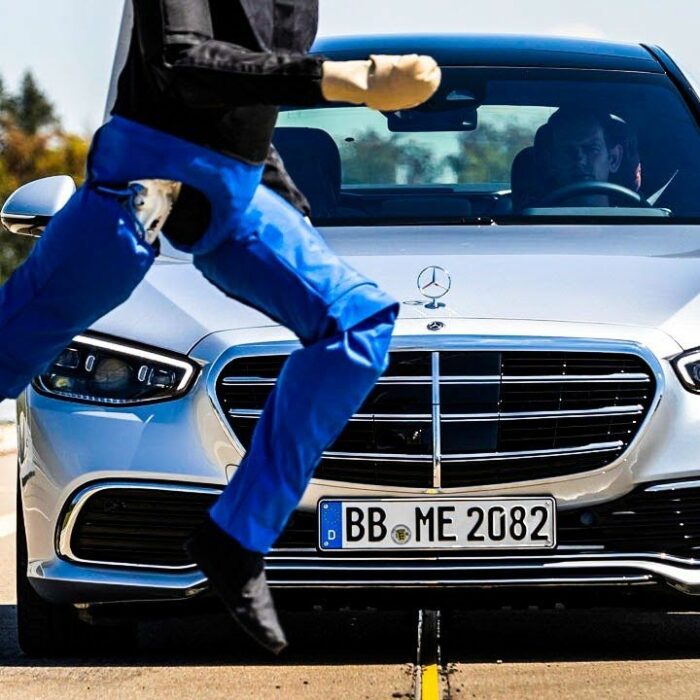Secrecy prevails in the Volkswagen research and development center in Wolfsburg: cameras on phones and laptops are taped, even the slightest deviation from the specified route is not welcome. We are about to be shown the latest developments in the field of lighting – promising headlights, lamps, and so on. The first to take the floor is one of the chief designers. The second – also a designer, but of a lower rank. They say how important it is for them to play with the plastics of lighting devices, their filling, to have freedom of form. As many as 15 company’s artists are engaged in this issue alone. But are engineers a third party?
Historically, it seems not. In general, a breakthrough in the field of head lights was the introduction of the H4 halogen double-filament lamp in 1971. Its rated low beam of 1,000 lumens was unattainable, and H4 is used in many low-cost cars to this day, including the initial versions of the Volkswagen Polo sedan. It is the amount of light from the source that mainly determines how well the headlight illuminates the road. And the area of the reflector, its shape and surface quality, as well as the optical properties of the diffuser are nuances.
Until the early 90s, the world (with the exception of the United States with their own standards) was content with the H4 lamp and some other halogen ones. By that time, designers had learned to make better use of the light output through the shape of the reflector or the installation of projector modules. Then, new lamps appeared, including the most popular single-filament H7 (1,500 lumens) ― this one is installed in low-beam and high-beam headlights of standard Polos produced in Kaluga. However, the Kia Rio/Hyundai Solaris use HB3 lamps (as much as 1,860 lumens), and the performance record among halogen lamps is held by high-beam H9 generating 2,100 lumens.

In 1991, again thanks to engineers, the revolutionary technology of xenon lamps with a nominal value of 3,200 lumens, more than three times more than that of H4, appeared. The light source was an electric arc, not a heated filament. Not differing in any way in appearance, xenon headlights have posed a lot of technical challenges: requirements for the optics’ accuracy increased, the presence of ignition units complicated the components’ layout. A little later, an automatic corrector and a headlight cleaning system became mandatory for xenon. All this is very expensive, but effective, especially in combination with beam-turning systems (since the 2000s).
About 15-20 years ago, designers came out of the shadows. At first, they experimented with the “filling” of the headlight. Do you remember how the headlights of the 3rd and 4th Golf cars differed having a similar shape? How fresh did the transparent finless plastic and the elegant “roundels” inside look? Then, headlights were elongated, flattened, narrowed for the sake of a predatory gaze… And what horizons “light design” has opened up, when the actual shape of the luminous elements changes! Now, there is simply no place for a lamp in the headlight to fulfill all the wishes of aesthetes. Therefore, the course is set for LEDs, and not only for Volkswagen.
Curiously, xenon technology is dying, but not dead yet. A new standard of lamps with a power of 25 W was invented instead of the classic 35-watt xenon. This allows us to fit the luminous flux into regulatory 2,000 lumens which don’t require an expensive self-correcting device and washer. Alas, the light of such headlamps is sometimes rather disappointing. The advantage of relatively good halogen lamps is that its cold light is more pleasant to the eye. Rumor has it that the mess with 25-watt xenon was made by lamp manufacturers to load idle capacities.
But engineers also like the global transition to LED technology, because it reduces energy consumption and increases the service life. The price is no longer frightening. An ordinary headlight with a small number of diodes (as on the top-class Polo) costs only a little more than the average halogen one. But a 25-watt xenon lamp without a corrector is almost twice as expensive. So far, it’s the prices for matrix headlights that are high: they have dozens of diodes that allow you to flexibly change the light distribution by alternating connection. You can, for example, shade an oncoming car when the high beam is turned on. But they are also about to fall in price.
The matrix module of the IQ.Light headlight of the latest Touareg, the size of half a block of cigarettes, contains a board, a radiator with a fan, 48 diodes of low beam and 27 of high beam. This ensemble works cool together with additional side elements, as if extending tentacles of light to all unlit sections of the road, leaving oncoming cars in the shadows. Light distribution modes depend on a lot of factors: weather, speed, trajectory… The range is 100 meters better than the 35-watt xenon.
The same efficiency is already provided by a compact micropixel LED with a size of 4×4 mm. Holding this in your hands, you can appreciate the work of the headlight equipped with it, without noticing a significant difference in the intensity of light. The accuracy of the beam control is impressive: the progress relative to the Touareg headlights is the same as between them and the Passat headlights with a mechanical shutter, which have become obsolete in only four years. Both designers and engineers are satisfied: having three “pixel” diodes in the headlight, giving 1,024 individual mini beams, you can use a matrix of 3,072 cells instead of the current 75-80.
Perhaps the development of light will go in a different direction. The light sources will not multiply, while the light distribution will be handled by intermediate matrix filters with a resolution of up to 30,000 pixels. This is enough to not only skillfully change the beam, but also to project inscriptions, symbols, and hints on the road… For example, to show in a turn the corridor in which the car will go at the current turn of the steering wheel, or to duplicate turn signals on the asphalt. But there is an opinion that this is a utopia. Roads are already full of visual garbage, it is not realistic to carry out such an idea through the certification maze, and a little dirt will cause the whole beautiful “picture” to be blurred.
Simple LEDs are also being improved. In a special black hangar equipped for testing lighting systems, we were shown a prototype with high-power diodes that consume 3-4 A against about 1 A of the current ones. There is actually more light, which means it can also be controlled more flexibly. If we narrow the high beam of such headlights, it will pierce 550 meters of darkness, which is only possible for laser headlights, where the light is “knocked out” from the fluorescent phosphor plate by laser beams.
This technology has been on the market for about five years ― in addition to BMW, precisely Volkswagen’s colleagues in the concern, Audi, use it. However, its appearance on the “people’s cars” is unlikely. Such headlights are insanely expensive because of the specific materials and technologies (in the case of the Audi A8 sedan – 215 thousand rubles more expensive than the already expensive matrix ones), and there are no prospects of cost reduction. In addition, the laser-luminescent source gives a very powerful, but narrow beam, the use of which is limited to high beam.
What kind of light pattern does the consumer generally prefer? It is the high beam that usually causes the most contradictory assessments. In Scandinavia, they prefer a long-range beam, and in the rest of Europe – a wide one, creating the illusion of high power. Volkswagen hopes to eventually offer the driver a choice of different beams. The low beam is significantly regulated, although someone prefers a clear border of light and shadow (typical for projector headlights), and someone prefers a smooth one. Objectively, they are equally effective, and this is purely a matter of taste. The Germans try to make the transition “slightly smoothed” to please everyone.
As for separate fog lights, they are an endangered species. Can you guess who they interfered with in the fight for the purity of the body lines? To fully compensate for the loss of fog lights, you can only use the expensive adaptive light of the main headlights, which can expand the beam in bad weather and when cornering. In the case of inexpensive cars, we are simply deprived of an additional light source. And the Russians should be especially offended: unlike Europe, the use of fog lights is legal in this country at any time of the day, and additional light is very useful on bumpy roads.

No progress is expected in the field of headlight cleaning. Volkswagen is satisfied with the current spray systems, because they fit into the certification requirements, according to which the headlight gets dirty with a tarred composition. It is clear to everyone that washers are ineffective in the chemical dirty fog of Russian reagents, but no one will develop a new technology specifically for us. Another important point is the temperature of the headlight glass. LEDs are cold and don’t melt snow in the same way as xenon and especially halogen lamps do. Therefore, if the car uses powerful LED elements that require a cooling fan, they try to direct the flow coming from it along the glass.
Another pitfall is the reliability and durability of LEDs. In theory, this is their strong point. But all diode headlights and lamps are “soldered” and don’t imply the replacement of luminous elements. Only recently, there were the first reports that Toyota is introducing replaceable LED modules in the lights of the new Corolla. The estimated service life of diodes, although longer than that of lamps, but is also finite. Volkswagen expects 8,000 hours of operation, which is about 11 years if you use the headlights two hours a day. Or less than a year, if you keep them on around the clock, for example, in a taxi. Then the fading is inevitable.
And there is still no turning back. In five years, only diodes will remain on Volkswagen cars. Designers are in ecstasy, engineers will look for new fields of application of technologies. For example, for communication between driverless cars. Right now, we’d like to know what’s on the other driver’s mind, and the lights might help. The projection of active parking lines on the asphalt is ready. Soon, it will be possible to send text, visual messages on screens or in the LED field of taillights to neighbors along the stream…

The main consumer conclusion from all of the above – don’t buy into dogmas. It is a mistake to think that halogen lamps are the most defective headlights by definition, and LEDs are better than xenon. There are leaders and outsiders within each of the types. Basic LED modules can easily shine worse than top halogen lamps. Remember that if the headlight doesn’t have a washer, the low beam luminous flux is guaranteed to be less than 2,000 lumens. The words “LED headlight” can mean both a high-tech product and an inexpensive fake. One thing is certain: headlights are getting more and more beautiful.
This is a translation. You can read the original here: https://www.drive.ru/technic/volkswagen/5be9abb9ec05c4fe3d0000db.html

Published September 09, 2021 • 9m to read






